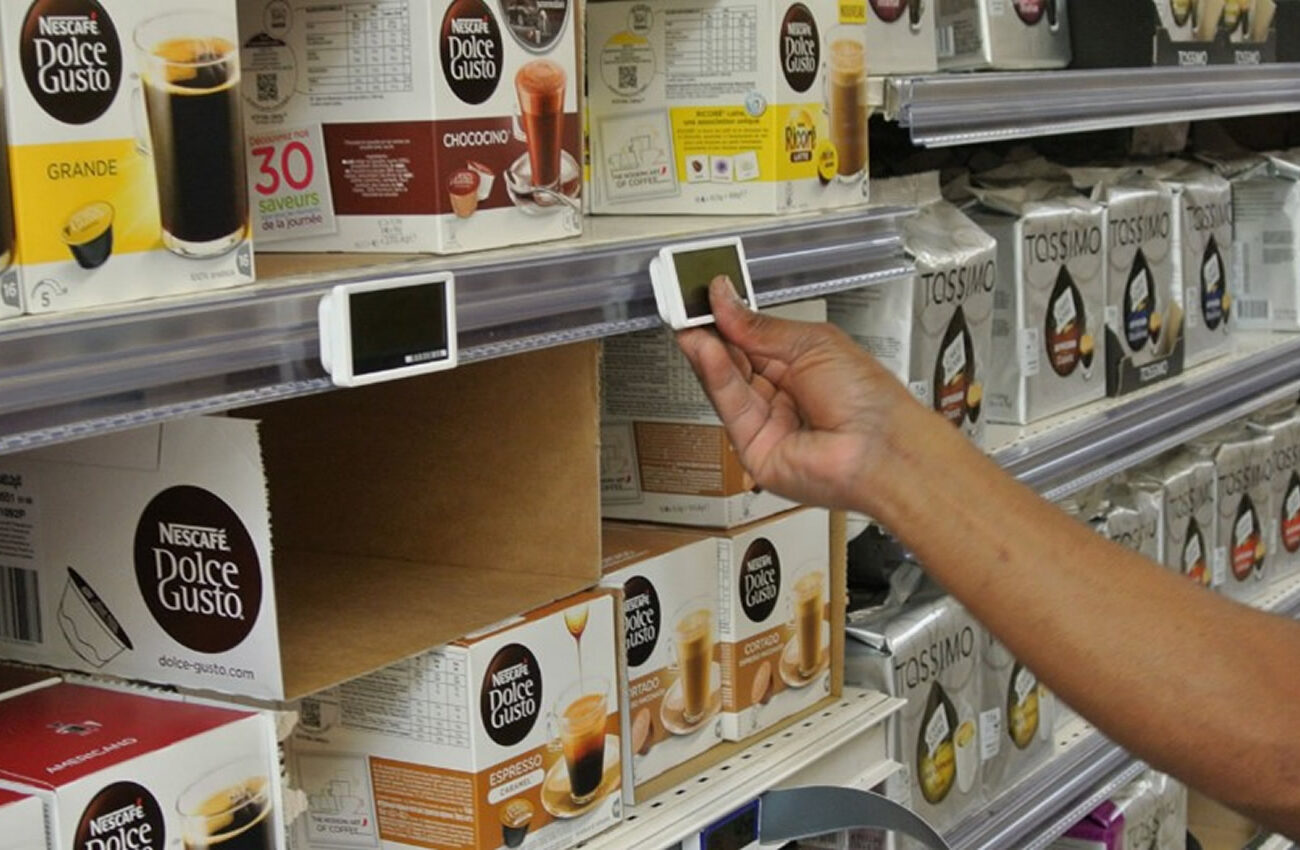Enhancing Stock Management with Electronic Shelf Labels (ESL)

An electronic shelf label (ESL) system is a solution used by retailers to display product pricing directly on store shelves. These digital labels—typically using E-paper or LCD (liquid-crystal display) technology—are fixed to the shelf edge and automatically updated via a central communication system whenever prices change.
Wireless updates are delivered through technologies such as radio frequency, infrared, or visible light communication. The chosen method must offer strong range, reliability, speed, and battery life. The key benefits of an electronic shelf labelling (ESL) system include reduced time and cost associated with price changes, improved pricing accuracy, and the ability to enable dynamic pricing—adjusting prices in real time based on demand, competition, stock levels, product shelf life, or promotions.
Managing Stock with ESL Technology
Effective stock control is vital for any retailer. Holding too much stock results in overstocking, while too little causes items to go out of stock. Technology can help businesses streamline their stock management processes, including alerting staff when it’s time to restock.
Although software systems can be highly sophisticated, human error can still occur. Understanding how to maximise the functionality of available technology—such as electronic shelf labelling ESL—can significantly reduce these inaccuracies.
ESLs are increasingly popular for managing both pricing and stock visibility. One of their key advantages is how they support retail staff and managers in maintaining accurate stock levels on the shop floor.
Here are six practical ways retailers can use ESL technology to improve in-store stock management:
1. Displaying Stock Information for Customers
To the customer, an ESL might appear to be just a digital price tag. However, these labels can show live stock levels, saving customers from having to locate a staff member. If an item is out of stock, the ESL can display the expected restock date. Some ESLs also include QR codes, allowing customers to quickly find the product online or check availability in nearby stores.
2. Providing Real-Time Information to Staff
For store staff, ESLs offer detailed internal stock data that may not be visible to customers. They can show current stock levels both on the shop floor and in the stockroom. ESLs can also display promotional alerts, add-on sale suggestions, and cross-selling opportunities. In some cases, they help staff locate products elsewhere in-store, avoiding lost sales if an item is missing from its primary location.
3. Maintaining Optimal Stock Levels
With ESL technology, retailers can quickly respond to stock fluctuations. Slower-moving items can be discounted sooner, and high-demand items better managed. ESLs also help determine when to promote seasonal stock, reducing the likelihood of waste due to expired products.
4. Assisting Staff at the Shelf Edge
By showing key stock details on the shelf, ESLs help staff assist customers more efficiently. In a shoe shop, for example, the label could show what sizes are available in the backroom—eliminating the need for staff to leave the customer’s side. If a size isn’t available, the ESL can guide the assistant to check availability online or at another branch.
5. Highlighting Stock Alerts
Colour coding and alert icons on ESLs can draw attention to items needing restocking, those relocated, or discontinued lines. This reduces time spent searching for products and allows staff to focus more on sales and customer needs, while also lowering the labour costs involved in manual stock checks.
6. Preventing Out-of-Stock Situations
Most out-of-stock issues occur at the store level due to overlooked low stock warnings. ESLs can be integrated with point-of-sale (POS) data and stock systems to proactively alert staff when stock is running low—well before items become unavailable. This allows for faster replenishment and minimises missed sales.
Future Potential of ESL Technology
In addition to improving stock control and pricing display, ESLs offer a wide range of current and future applications. With the ability to process and display multiple data streams at the shelf edge, ESLs provide retailers with a dynamic and adaptable platform for in-store operations.
By integrating ESL technology into their stock management strategy, retailers can realise significant savings in time and cost—benefiting both the business and its customers.